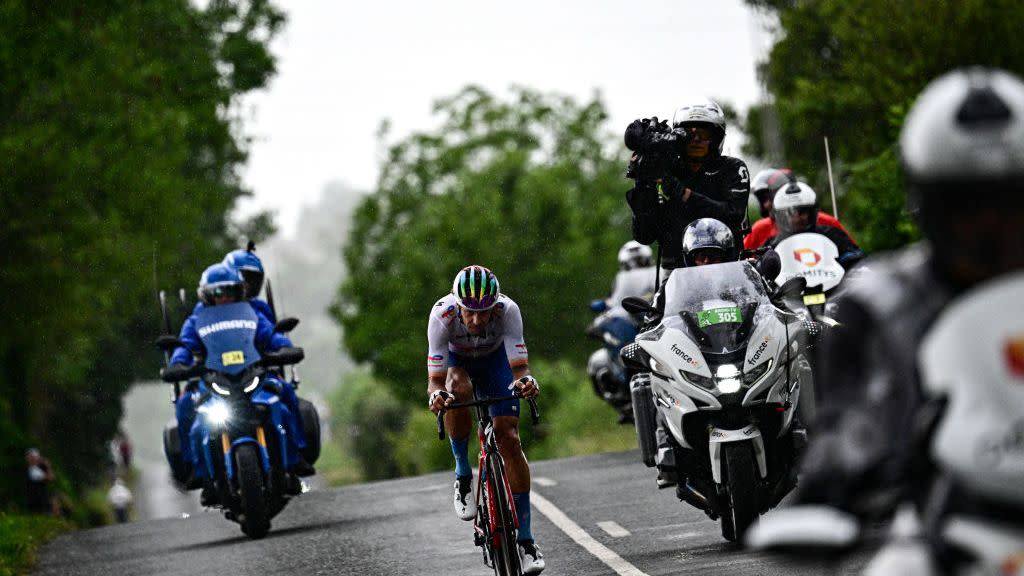A Laser Distance Sensor Could Solve Cycling’s Motorbike Problem

As the president of bike racers’ union, the Cyclistes Professionnels Associés (CPA), one major function of Adam Hansen’s job is to make bike racing better and safer for the riders involved.
In his time as CPA president, Hansen has fully taken the reins of rider safety, making it one of the prime focuses in his role. He’s been instrumental in the inclusion and expansion of safety measures along the Tour de France, reviewing and adding protective cushioning to particularly dangerous descents along the parcours.
Now, after a pair of very high-profile incidences in this year’s Tour de France involving race motos—one of which some argue may have cost Tadej Pogačar the chance to recapture the yellow jersey—Hansen, himself a former pro, is turning toward high tech to try and solve the problem of motos interfering with races.
Last week, Hansen tweeted that he purchased a laser-based distance sensor in hopes of developing a protocol in which motos could more safely keep their distance from riders.
“Yesterday I purchased a later (sic) distance sensor. I will start to develop a sensor that could be attached to motorbikes in races to govern the distance from them to the riders. Motorbikes influence the races too much. Too many teams and riders complain about this. Wish me luck!” the tweet read, along with a screenshot of the item and a price tag of 5,172 Czech korunas, or about $240.
Motos influencing races is hardly a new phenomenon.
In 2016, then-yellow jersey Chris Froome famously ran up Mont Ventoux after he, along with Richie Porte and Bauke Mollema, crashed into the back of a moto that was held up by a throng of overeager fans.
Another high-profile moto mishap came in 2020, when Julian Alaphilippe crashed into a moto while in the lead group of the Tour of Flanders, breaking his hand.
And then this year, a few days after Pogačar’s attack near the peak of the Col de Joux Plane was stalled by a moto, Jonas Vingegaard and Thibault Pinot were forced to stopped completely on the Col de la Loze.
Hansen, who has a background in computer engineering, has long been a noted techie who, in his own racing days, took apart and rebuilt his race radio in an effort to make it lighter. He also helped He also once made his own cycling shoes, prototyping sixteen different versions before finding the perfect fit.
Maybe a hands-on, tinkering, curiosity-bound union president is just what bike racing needs. It seems to be working for rider safety. Next, it could be a way to keep hindering motos out of the way of charging racers.
You Might Also Like

